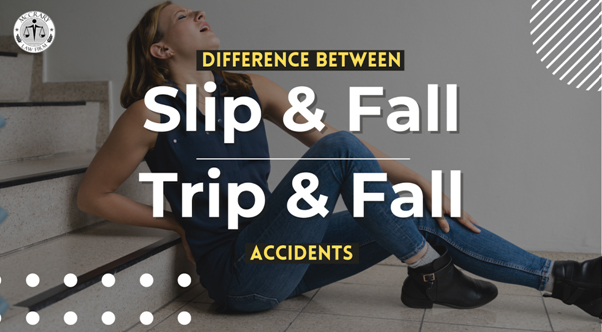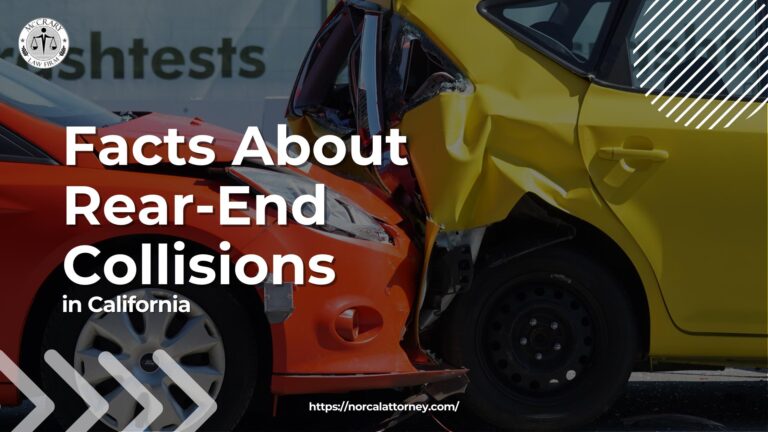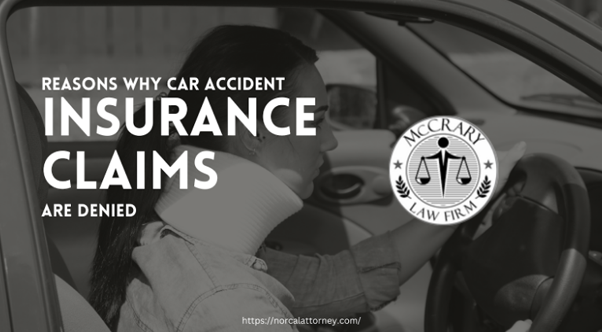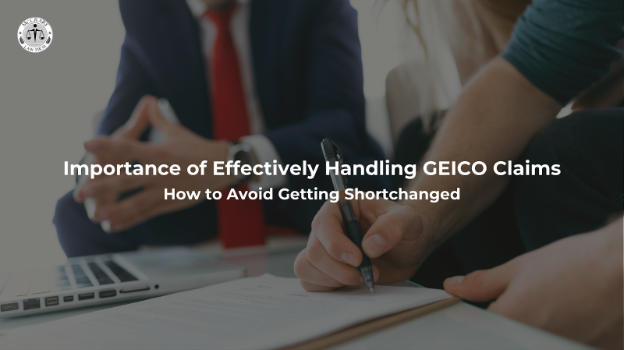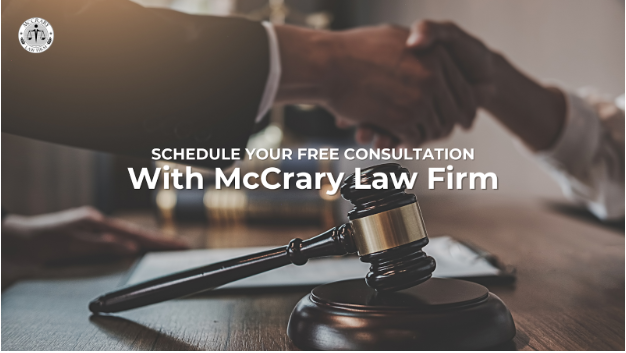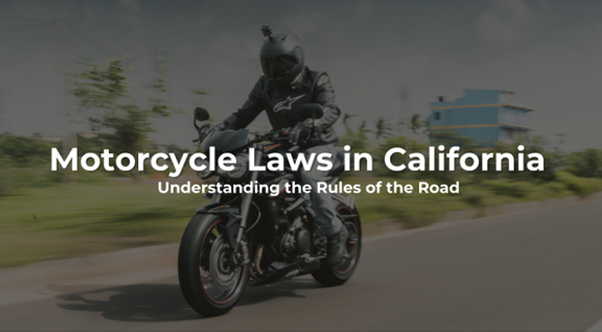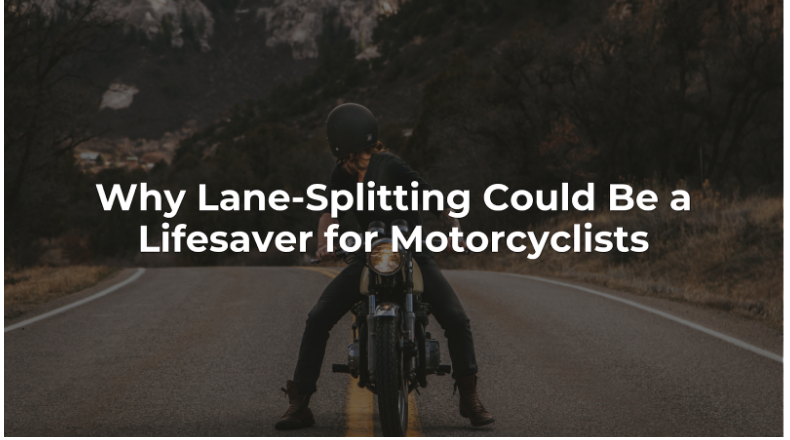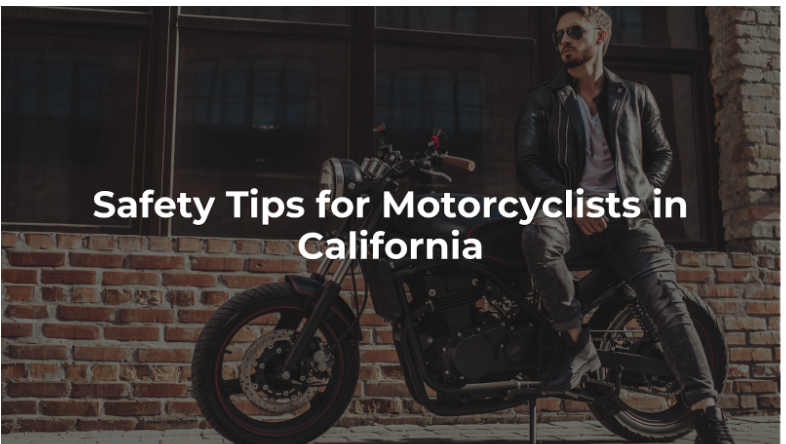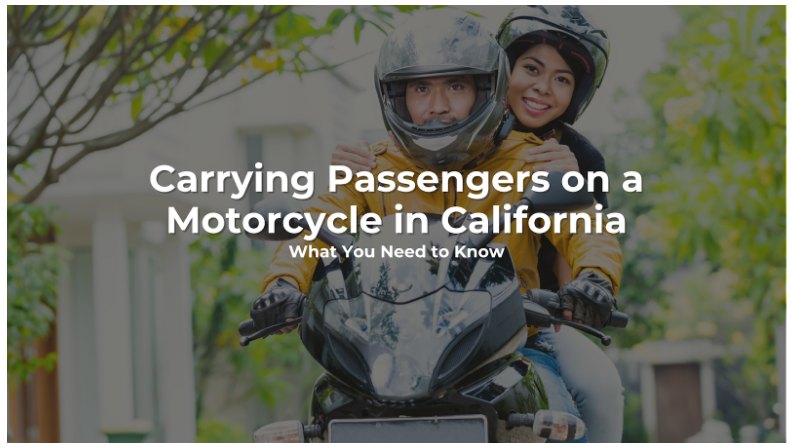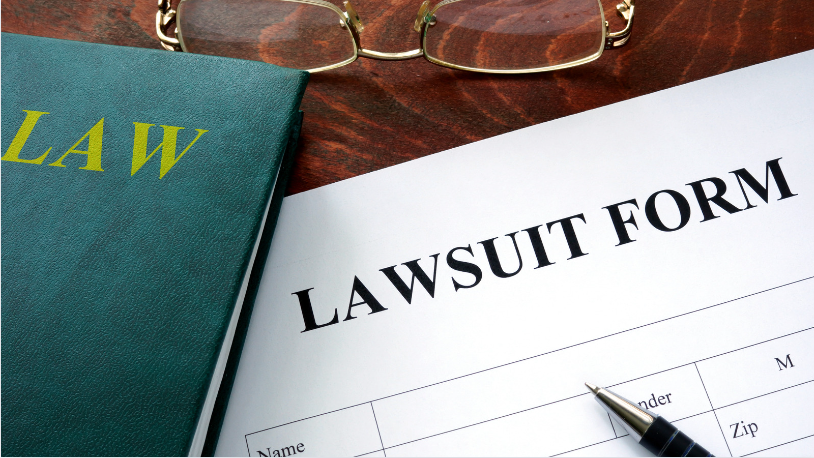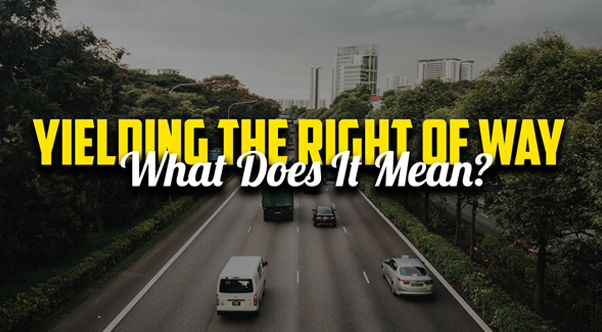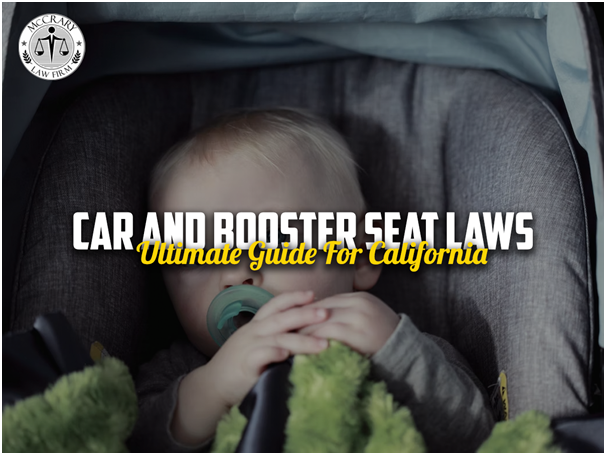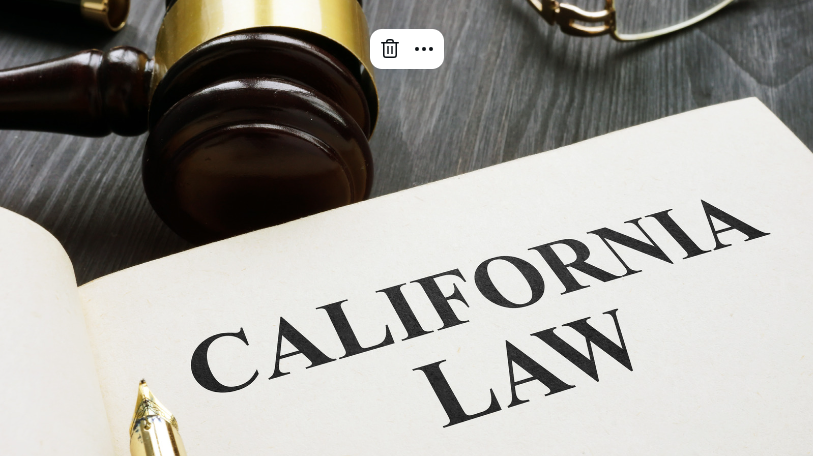How To Maximize on Auto Accident Claims with Allstate Insurance
How To Maximize On Auto Accident Claims With Allstate Insurance
By Dan McCrary | May 9, 2023
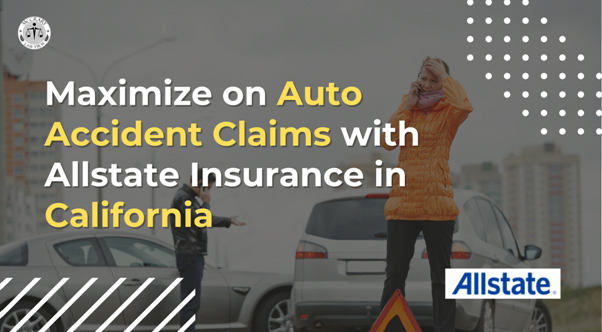
Are you a California resident who has recently been in an auto accident? Are you in search of the best way to maximize your insurance payout with Allstate and guarantee that all damages are covered? If so, then this blog post is a must-read! This article provides a detailed guide to filing an auto accident claim with Allstate Insurance in California. We'll cover topics such as the documents required to initiate your claim, effective communication strategies when dealing with Allstate representatives, and tips on maximizing the amount of your settlement or reimbursement. Read on to see how you can maximize your insurance response after an unfortunate auto accident!
Have a question?
We’re here to help 24/7.
Call or Text Us Now (855) 752-6326
Table Of Contents
1. Allstate Insurance’s History
2. What You Can Expect With Allstate
3. Understanding Your Allstate Insurance Policy
4. How To Prepare When Filing A Claim With Allstate
5. Gather Information At The Accident Scene
6. Important Things To Do After Your Car Accident
7. Working With Allstate's Claims Adjuster
8. Allstate’s Low-Impact Collision Settlements
9. How To Contact The Allstate Claims Department
10. What Happens When You File An Allstate Claim?
11. Tips For Maximizing The Value Of Your Allstate Insurance Claim
12. Consider Working With An Experienced Attorney Who Specializes In Insurance Claims
Allstate Insurance’s History
Allstate Insurance has a rich and fascinating history that spans over 90 years. The company was founded in 1931 by Sears, Roebuck & Co., one of the largest retail chains in the United States at the time. The company's initial goal was to provide car insurance to Sears customers, but it quickly expanded its services to include other types of insurance. In the 1950s and 1960s, Allstate Insurance continued to grow and expand its services. The company introduced new insurance products, including life insurance, home insurance, and business insurance, and opened new offices across the country. Allstate also became the first insurance company to use television commercials to promote its products, further increasing its visibility and reach.
Today, Allstate Insurance is one of the largest insurance companies in the world, with over 46,000 employees and more than $131 billion in assets. The company started to innovate and expand its services, with a focus on providing personalized and responsive customer service. Allstate's commitment to innovation and customer service has helped it remain a leader in the insurance industry for over 90 years.
What You Can Expect With Allstate
Allstate is a well-known insurance company that offers a range of services to its customers. With Allstate, you can expect quality coverage for your home, car, and life. They have a reputation for excellent customer service, and their agents are knowledgeable and friendly. Allstate also offers various discounts to help you save money on your insurance premiums, such as safe driver discounts and multi-policy discounts. In addition, they have a user-friendly website and mobile app that makes it easy to control your policy and file claims.
Overall, if you choose Allstate, you can expect reliable coverage, exceptional customer service, and convenient tools to help you manage your insurance needs.
Understanding Your Allstate Insurance Policy
Before we dive into the claims process, it's essential to understand your Allstate Insurance policy. Knowing your policy's coverage limits, deductibles, and exclusions will help you understand what types of damages and injuries are covered under your policy. Allstate offers different types of coverage, including liability coverage, collision coverage, comprehensive coverage, uninsured/underinsured motorist coverage, and medical payments coverage which are mentioned below:

Liability Coverage
Liability coverage is required in California, and it covers damages you may cause to other people's property or injuries they may sustain in an accident you're responsible for. It is mandatory for all drivers to have at least $15,000 per person and $30,000 per accident in liability coverage.
Collision Coverage
Collision coverage covers damages to your car resulting from a collision, regardless of who's at fault. This coverage is optional but highly recommended if you have a new or more expensive car.
Comprehensive Coverage
Comprehensive coverage covers damages to your car resulting from non-collision events like theft, vandalism, or weather-related incidents. Living in a region prone to natural calamities or vehicle theft? We highly recommend you consider obtaining this coverage.
Uninsured/Underinsured Motorist Coverage
Uninsured/underinsured motorist coverage covers damages and injuries resulting from an accident caused by a driver who doesn't have enough insurance or no insurance at all. This coverage is not mandatory, but it can be helpful in cases where the other driver doesn't have enough coverage to pay for loss and injuries.
Personal Injury Protection (PIP)
With Personal Injury Protection (PIP), you can be sure that medical costs and wages lost due to an accident will be taken care of, regardless of who is responsible. This coverage is optional, but it can be helpful in cases where your health insurance doesn't cover all your medical expenses.
Medical Payments Coverage
Medical payments coverage covers medical expenses resulting from an accident, regardless of who's at fault. This coverage is also optional but can be helpful in cases where you have high medical expenses resulting from an accident.
How To Prepare When Filing a Claim with Allstate
The first step in the claims process is reporting your auto accident to Allstate. You can report your accident online, through the Allstate mobile app, or by calling their claims department. It's essential to report the accident as soon as possible, even if you're not at fault. Failing to report an accident promptly may result in delays or denial of your claim.

What Information To Provide
When reporting your accident, you'll need to provide details such as the date, time, and location of the accident, the other driver's information, the extent of damages and injuries, and any police officers reports or witness statements. Allstate will work with you every step of the way - starting by assigning an adjuster to your claim who will contact you promptly in order to obtain further information and begin the claims process.
Filing A Police Report
If the accident resulted in injuries or damages above a certain threshold, California law requires you to file a police report. This report can serve as evidence of the accident and can help your claim process. Ensure to get a copy of the police officer's report for your records and provide it to Allstate.
Gather Information At The Accident Scene
To support your car accident claim, it's important to gather as much evidence as possible. This includes taking photos of the accident scene, damages to your car, and injuries sustained. It's also important to gather witness statements and contact information. Allstate will use this evidence to determine the at-fault driver for the accident and the extent of damages and injuries.

Taking Photos
Take photos of the accident scene from different angles, including the vehicles involved, the damage sustained, and any surrounding objects or structures that may have been impacted. If you have visible injuries, take photos of those as well.
Gathering Witness Statements
If there were any bystanders who saw the accident happen, ask for their contact information and a statement of what they saw. Witness statements can be valuable evidence to support your claim.
Keeping Records
Make sure to document every cost associated with the accident, such as medical bills, vehicle repair shop costs, fees for a rental car, and wages lost because of time away from work. Allstate will use this information to calculate the total amount of damages you're entitled to.
Important Things to Do After Your Car Accident
In the case of a car crash, there are certain crucial steps that must be taken to ensure safety and protect your legal rights. First and foremost, check to ensure everyone involved in the accident is okay and call for medical assistance if necessary. Next, contact the police and file a police report, which can be useful for insurance claims and legal proceedings. Ensure you acquire contact and insurance data from all those involved in the accident, as well as any onlookers. Snap pictures of the scene of the accident and all affected vehicles. Contacting your insurer swiftly is also essential to report your incident.
Avoid admitting fault or making speculative statements about the accident, as this can be used oppos you in any legal proceedings. Finally, consider consulting with an attorney who specializes in auto accident claims to ensure that your legal rights are protected and that you receive the compensation you deserve for any injuries or damages sustained in the accident.
Personal Injury
Car Accident
Dog Bite
Motorcycle Accident
Truck Accident
Uber or Lyft
Wrongful Death
Latest News
Archives
Working With Allstate's Claims Adjuster
Once you've reported your claim and provided all the necessary information and evidence, an Allstate claims adjuster will be assigned to your case. The adjuster will review your policy, assess the damages and injuries, and determine the amount of compensation you're entitled to.
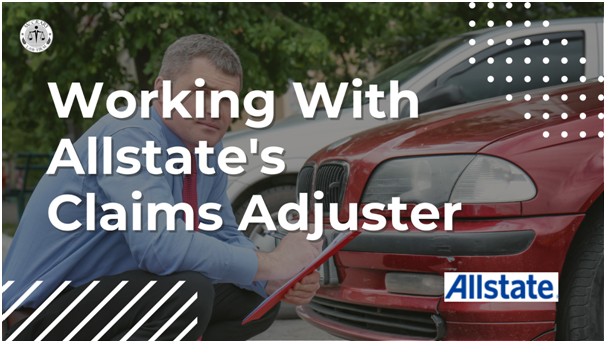
Cooperating with the Claims Adjuster
It's important to cooperate with the claims adjuster throughout the claims process. Provide any additional information or evidence they request promptly, and be available to answer any questions they may have. This will help ensure that your claim is processed quickly and accurately.
Negotiating With The Claims Adjuster
If you disagree with the claims adjuster's assessment of your damages or the compensation offered, you have the right to negotiate. Be prepared to provide additional evidence or documentation to support your claim and explain why you believe you're entitled to a higher amount of compensation.
Allstate’s Low-Impact Collision Settlements
Once the claims adjuster has assessed the damages and injuries and determined the amount of compensation you're entitled to, they will make a settlement offer. The settlement offer will include the total amount of damages and injuries, as well as any deductibles or exclusions that apply.
Accepting the Settlement Offer
If you've agreed with the settlement offer, you can accept it and sign a release form, which will waive your right to pursue further compensation for the accident. Make sure to read the release form carefully and understand the terms before signing.
Rejecting the Settlement Offer
If you're not satisfied with the settlement offer, you can reject it and negotiate for a higher amount. Alternatively, you can take legal action against the other driver or their insurance provider. Keep in mind that filing a lawsuit can be time-consuming and costly, so it's important to weigh your options carefully.
How To Contact The Allstate Claims Department
To start the process of filing an insurance claim with Allstate for your car accident, get in touch with Allstate's Claims Division. There are several steps to get in touch with the Claims Department, including by phone, online, or through the Allstate mobile app. To file a claim by phone, you can call the Allstate Claims Department at 800-726-6033. This number is available 24/7, so you can report your claim as soon as possible, even if it's outside of regular business hours. If you prefer to file your claim online, you can do so through the Allstate website. Simply log in to your account, click on the "File a Claim" button, and follow the prompts to provide the necessary information about your accident.
Finally, if you have the Allstate mobile app installed on your phone, you can use it to file a claim quickly and easily. Simply open the app, click on the "Claims" button, and follow the prompts to report your accident.

No matter which method you choose, it's important to contact the Allstate Claims Department as soon as possible after your accident to ensure that your claim is processed quickly and efficiently.
What Happens When You File An Allstate Claim?
The process is relatively straightforward if you need to file a claim with Allstate. First, contact your local Allstate agent or call their claims hotline. They will guide you through the necessary steps and provide you with any additional information. Next, you'll need to provide information about the incident, such as the date, time, and location, and provide any relevant documentation, such as police reports or medical bills. After you lodge your insurance claim, an adjuster will be appointed to review the vehicle damage and establish how much of it can be covered by your policy. They will collaborate with you throughout this process to make sure that everything is taken care of efficiently.
Allstate strives to make the claims process as smooth and efficient as possible, and its adjusters are known for their professionalism and expertise. Ultimately, Allstate will be at your side throughout the entire process so that your claim is handled efficiently and fairly.
Tips for Maximizing the Value of Your Allstate Insurance Claim
If you require to submit an insurance claim to Allstate, there are several ways you can ensure that your claim is successful and maximized for its greatest value. First and foremost, document the accident scene thoroughly by taking photos and collecting contact information from any witnesses. Be sure to also seek medical attention promptly if you've been injured. When speaking with your adjuster, be honest and thorough in providing information about the accident, but avoid admitting fault or making speculative statements. To ensure that you are able to cover all costs associated with the accident, be sure to keep track of every expense incurred – from medical bills and property damage to anything else.
Finally, consider working with an experienced attorney who specializes in insurance claims to help you negotiate a fair settlement and advocate for your rights. Following these tips, you can help to make sure that your Allstate insurance claim is valued appropriately and that you receive the compensation you deserve.
Consider Working With An Experienced Attorney Who Specializes In Insurance Claims
When dealing with an auto accident claim with Allstate Insurance in California, it's important to consider working with an experienced attorney who specializes in insurance claims. With an attorney on your side, you can ensure that Allstate will provide a fair settlement while obtaining invaluable guidance throughout the claims process. They will ardently fight for your rights, guaranteeing that you obtain the compensation to which you are legally entitled to any injuries or damages sustained in the accident. Additionally, an attorney can help you navigate any complex legal issues that may arise during the claims process, such as liability disputes or subrogation claims.
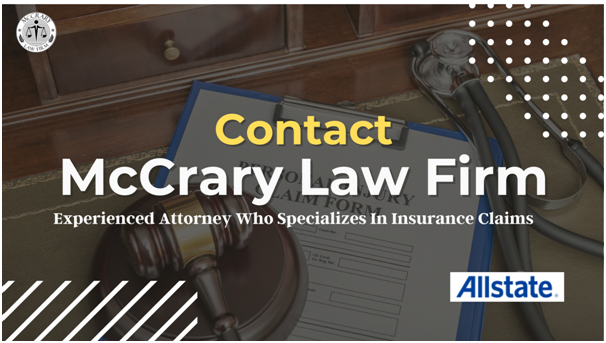
Personal Suggestion; Ultimately, working with an experienced attorney like McCrary Law Firm can help you maximize the value of your Allstate Insurance claim and ensure that your rights are protected.
Getting Help For Your Allstate Claim
If you're having difficulty navigating the claims process or feel that your claim has been unfairly denied or undervalued, you may also consider reaching out to an attorney who specializes in insurance claims. They can provide you with legal advice and advocacy to help you maximize your claim and ensure that your rights are protected. Overall, McCrary Law Firm has many resources available to help you navigate the claims process and ensure that you receive the compensation you deserve.
Conclusion - Auto Accident Claims With Allstate Insurance
If you've been involved in an auto accident in California, working with Allstate Insurance can help you maximize your claim and receive fair compensation for your damages and injuries. By understanding your policy, reporting the accidents promptly, gathering evidence, working with the claims adjuster, and negotiating the settlement offer, you can increase your chances of a successful claim outcome. Remember to cooperate with Allstate throughout the process and to seek legal advice if necessary.
When successful in filing an Allstate auto insurance claim, people have the potential to receive payment for medical bills and expenses as well as property damage.
Frequently Asked Questions (FAQs)
What do I need to do after an auto accident to file a claim with Allstate in California?
After an accident, you should first make sure that everyone involved is safe and then contact Allstate to report the incident. You'll need to provide details about the accident and any injuries or property damage that occurred.
What information should I gather at the accident scene to maximize my Allstate claim?
It's important to gather as much information as possible, including the other driver's contact information, insurance information, and license plate number. You should also take photos of the accident scene, including any damage to the vehicles and any injuries sustained.
How long does it take to receive a payout from Allstate for an auto accident claim in California?
Depending on the details of your claim, you can expect to receive a payout from Allstate in an expedited timeframe. However, Allstate strives to resolve claims as quickly as possible and will keep you updated throughout the process.
Will my Allstate insurance rates increase after filing an auto accident claim in California?
Your insurance rates may increase after filing an accident claim with Allstate, but this will depend on the specifics of your policy and the details of the accident. It's best to speak with your local agent to understand how your claim will impact your rates.
How do I negotiate a settlement with Allstate for my auto accident claim in California?
Allstate will work with you to negotiate a fair settlement for your claim. However, it's important to have a clear understanding of the value of your claim and be prepared to advocate for yourself during the negotiation process.
Can I appeal an Allstate decision on my auto accident claim in California?
Yes, you can appeal an Allstate decision on your claim. You'll need to provide additional information or evidence to support your appeal and work with your adjuster to reach a resolution.
What steps can I take to maximize my payout from Allstate for an auto accident claim in California?
To maximize your payout from Allstate, make sure to provide all necessary documentation and evidence to support your claim. Work with your adjuster to understand the value of your claim and advocate for yourself during the negotiation process.
Our personal injury services extend across various locations to ensure we can assist you wherever you may be. We are proud to offer our expertise in Rocklin, Folsom, Yuba City, Woodland, Fresno, Pleasanton, Carmichael, Citrus Heights, Roseville, Natomas, Sacramento, Rancho Cordova, Fair Oaks, Elk Grove, and El Dorado Hills. Each location is equipped to provide you with the comprehensive support and legal guidance you need for your personal injury case.
FREE CONSULTATION 24/7, NO FEES UNTIL WE WIN .
Call or Text Us Now (855) 752-6326



